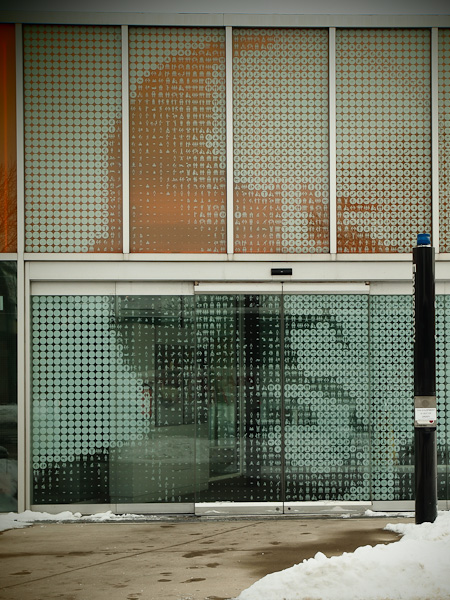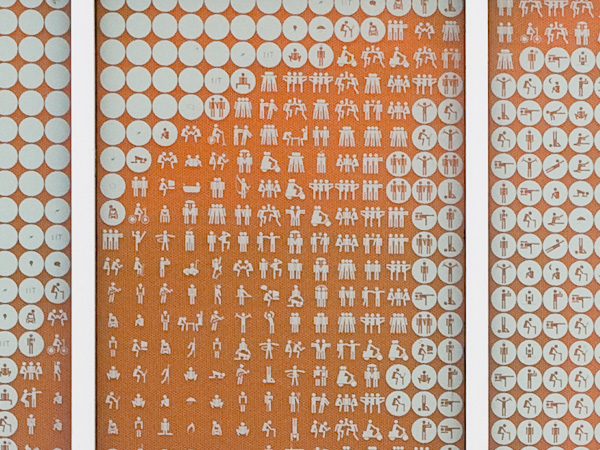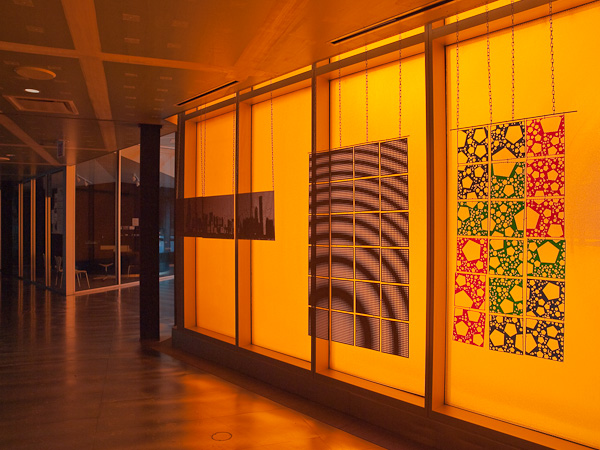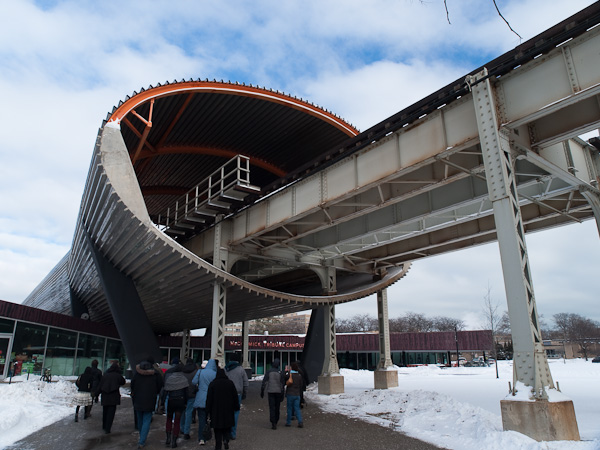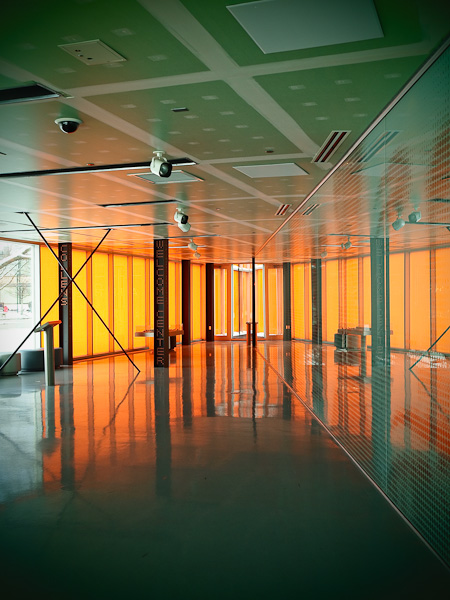These are my last photographs I will post from the walking tour through the McCormick Tribune Campus Center (architect OMA/Rem Koolhaas 2003) on Illinois Institute of Technology‘s campus in Chicago. Other buildings I shot, including Mies’ Crown Hall and a huge dormitory that has a shape resembling a speeding commuter train, will be featured next.
I would have missed this photo were it not for the tour docent. After we had loaded onto the Chicago Architecture Foundation‘s bus, he pointed out a vague portrait of Mies made up of small diameter icons on the glass entrance to the building. It was difficult to see, but the docent said, “I’m told the portrait is more visible when taken with a digital camera.” Always up to a photo challenge, I and another young man toting a camera jumped back off the warm bus, and the tour group patiently waited while we clicked away.
Later in the bus I let the docent chimp my photos so he could see the portrait. Just as he had claimed, the icons formed into an interesting portrait of Ludwig Mies von der Rohe, the architect who was instrumental in setting up IIT’s architectural school and implementing an architectural movement on IIT’s campus and beyond.
The New York City multimedia firm, 2×4 Inc., designed a set of functional graphic art for the building — murals, wallpaper, clocks, lighting, textiles, signs — that represent the various functions of the building. I was told by Sherpa that even the bathrooms follow the theme, but I didn’t check out that tip.
(Next time I visit, I am going to do an exploration of these individual icons to see what goes on in this building – camera in hand, of course!) Though it was officially winter break, I did see students studying, lounging, eating, and everywhere, there were people working on computers. But there are hundreds of icons. So there must be more…
In honor of Mies’s contribution and influence on the school, 2×4 etched his portrait on the facade of the building and on the sliding glass doors that serve as the main entrance. To enter the building, one must walk, literally, into Mies’s mouth. (How about that for symbolism?)
